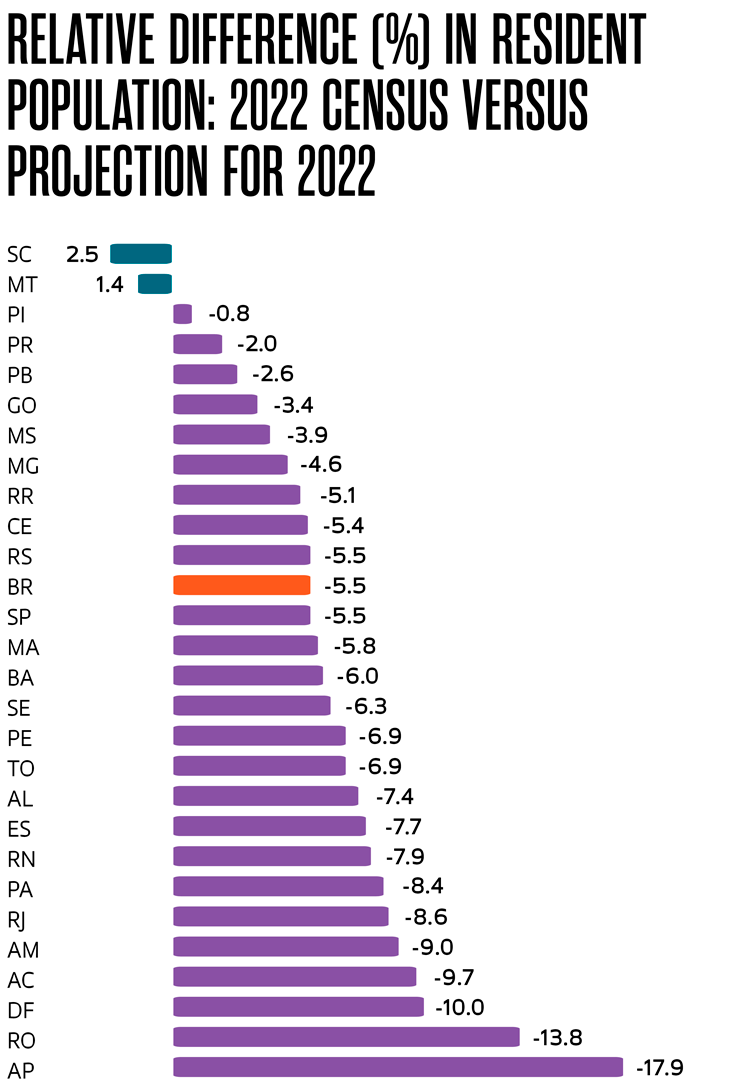- The population of Brazil determined by the 2022 Census, which was recently released by the Brazilian Institute of Geography and Statistics (IBGE), was 203,062,512 people, 5.5% smaller than the previously used estimate of 214,828,540, based on projections for 2018 calculated from the last official count, taken in 2010
- The population size was smaller than predicted in every state except Mato Grosso and Santa Catarina. The biggest differences (of more than 8%) were seen in the northern states, the Federal District, and Rio de Janeiro
- Among states with more than 10 million inhabitants, Rio de Janeiro presented the largest overestimation (8.6%). Next was Bahia (6.0%), then São Paulo and Rio Grande do Sul (5.5%), Minas Gerais (4.6%), and Paraná (2.0%)
Data
Impacts of the 2022 Census

- The new resident population values have an impact on government policy. Indicators that use population size as the denominator, such as Gross Domestic Product (GDP) per capita, will also change as a result of the new figures
- Science, technology, and innovation indicators, for example, include scientific articles published and the number of doctorates awarded per 100,000 inhabitants

- The number of scientific articles published per 100,000 inhabitants in Brazil increased from 27.9 to 29.5 using the census population, and from 53.5 to 56.6 for São Paulo
- Despite the increase, São Paulo lost its position as third in Brazil (second among states with at least 10 million inhabitants) to Rio de Janeiro. The revised population in Rio de Janeiro was a significant reduction, resulting in an increase in the indicator from 52.8 publications per 100,000 inhabitants to 57.8
- The change was similar when it came to the number of doctorates awarded per 100,000 inhabitants, for which São Paulo remained in fifth position nationally, with 13.3 doctorates per 100,000 inhabitants, which is above the national average of 10.2. The state went up a position among those with more than 10 million residents, surpassing Paraná, but still below Rio Grande do Sul (20.0) and Rio de Janeiro (16.0) (see above)
Note (1) Data from 2021, since no data for 2022 are available. Sources Brazilian Institute of Geography and Statistics (IBGE); Incites, Web of Science, Clarivate, Data downloaded on 07/01/2023; Microdata from the CAPES/MEC sucupira, data base, Downloaded in january 2023 Prepared by FAPESP Studies and Indicators Team (DPCTA)
Republish